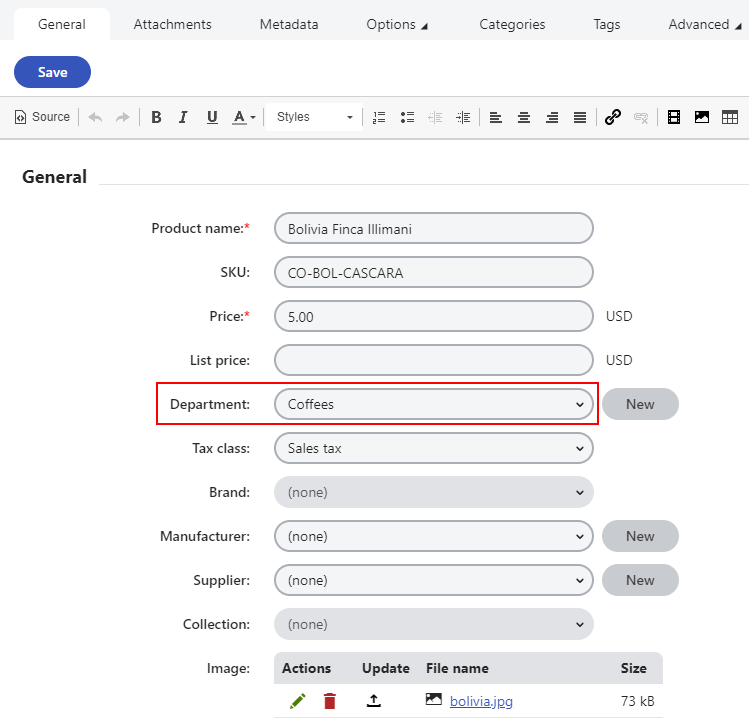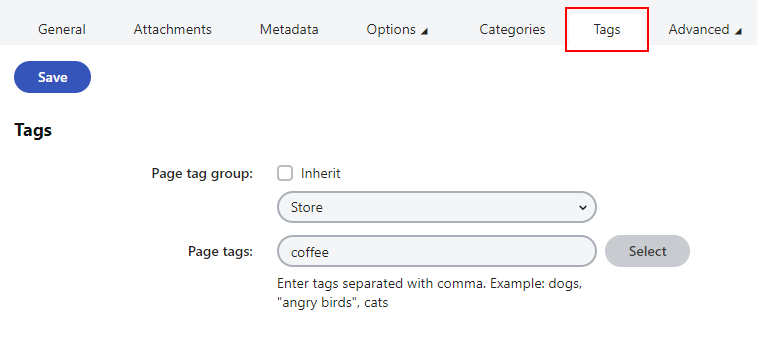Categorizing products
Categorize your products and manage your store more comfortably. With categorizing of the products, your site is clearer for your customers, you are able to automatically assign taxes to new products, you can differentiate products with key words and much more. To categorize products, you can use:
Product tree structure
The product tree structure defines a hierarchy of sections (folders), which contain individual products. The Products application and also the product part of the Pages application reflect the product structure.
Learn more about setting up the product tree structure in Configuring product structure.

Tip: You can include a single product into multiple categories (sections) by using the product linking feature. See Linking existing products to learn more.
Departments
By default, departments provide features for store managers and administrators. Departments enable you to assign taxes to products automatically. If you set a default tax class for a department and then create a product in the department, the given tax class is applied to the created product.
Learn more about departments in Departments.

Page categories
Categorizing is useful when you want to distinguish related pages in the system based on, for example, their topic. Every page or product can be assigned to zero or more categories. You can then create, for example, pages with category lists with promoted or seasonal products.
Learn more about categories in Assigning pages to categories.
Categories are associated with pages. If you use stand-alone SKUs, you cannot assign categories to them.

Page tags
Tagging product pages on a site is useful when you want to differentiate pages or products with the use of key words. Tags are a convenient way of classifying pages based on various criteria such as interests. Thanks to tags, site visitors can view different pages or products with the same tag or view similar pages or products to the one they just read.
Learn more about tags in Tagging pages.
Tags are associated with pages. If you use stand-alone SKUs, you cannot tag them.
